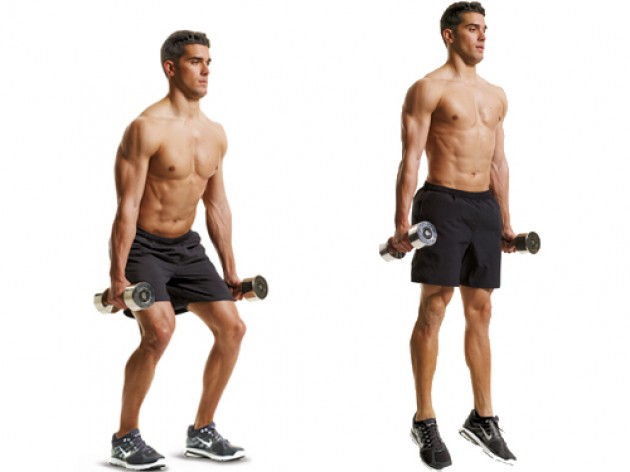To develop a specific exercise program for any movement or sports skill requires some basic information. First, the individual needs to understand the mechanics of the movement along with the muscles most involved in that movement.
Second, the individual needs to understand the type of muscle contractions needed for the skill. Last, the individual needs to link the mechanics of the movement and the type of muscle contraction to a sport specific exercise.
Movement Analysis of the Vertical Jump
The lower extremity mechanics of the vertical jump include powerful hip, knee, and ankle extension all executed at the same time. Exercises to improve the vertical leap need to incorporate extension of the lower extremity.
The muscles most involved in hip extension include the powerful gluteus maximus muscle together with the three muscles of the hamstring (semitendinosus, semimembranosus, and biceps femoris). Both the size of the muscle and the direction of the muscle fibers of the gluteus maximus make this muscle the most powerful muscle of the lower extremity and the one that needs to be targeted to improve the vertical leap.
Turning a Strength Exercise into a Power Exercise
Because the vertical leap is a power movement, the extensor muscles of the hip and knee need to be trained for power. Power movements include both a strength and speed component. Any exercise can become a power exercise if a speed component is included.
For example, an individual can turn a squat into a power exercise by performing the concentric movement (return to standing position) as quickly as possible. The eccentric phase (downward phase) should always be performed slowly and under control, but the concentric phase can be performed with speed. Control the downward motion slowly, but use an explosive motion to return to standing. In this way, any exercise can be turned into a power exercise.
Because the vertical jump is an explosive type of skill, exercises to improve vertical jump need to include power exercises. For example, a two-legged squat performed as a power squat is a good exercise to improve vertical jump.
The Key to Plyometric Exercises
Once a basic two-legged power squat can be performed repeatedly, the individual can progress to a more challenging set of exercises known as plyometrics. The key concept in plyometrics is to reduce the amortization phase (time it takes to change directions from the down phase to the up phase). This requires the individual to focus on the quick change of direction in the middle of the exercise.
Contrary to popular thought, plyometric training does not have to involve depth jump training. Any exercise can be turned into a plyometric exercise if the focus is on a quick amortization phase.
Beginning plyometric exercises should be performed on a level surface using both legs. For example, a beginning level plyometric squat would include a standing squat (no weights involved). The individual would begin in a standing position with feet at shoulder width, slowly lowering into a squat position (no more than 90 degrees of knee flexion), quickly changing directions from the down phase to the up phase, and exploding as high into the air as possible carefully absorbing the landing with both feet upon impact.
This exercise uses the weight of the body as the resistance, includes a power movement (explosive jump at the end), and is plyometric in nature by virtue of the quick change in the direction. This exercise can be performed in multiple sets of 6-8 repetitions. The difficulty level can be increased by adding weight (weight bar, dumbbells, ankle weights), increasing the number of repetitions, and moving from two-legged to single-leg exercises.
An adequate strength base needs to be gained prior to moving to advanced exercises. As with all exercise programs, care needs to be taken when learning new exercises or moving to more advanced exercises so as not to injure muscles or joints.
